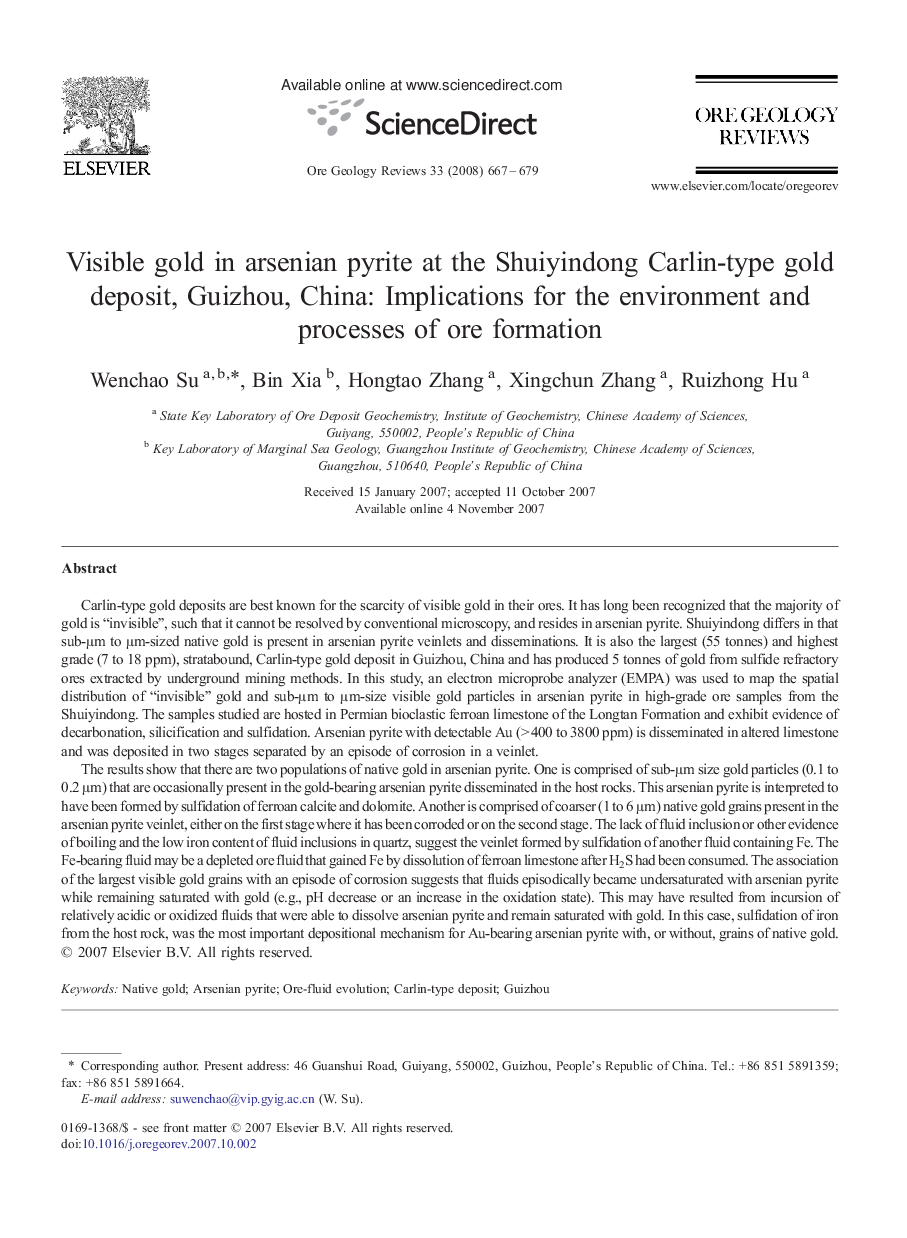| Article ID | Journal | Published Year | Pages | File Type |
|---|---|---|---|---|
| 4698039 | Ore Geology Reviews | 2008 | 13 Pages |
Carlin-type gold deposits are best known for the scarcity of visible gold in their ores. It has long been recognized that the majority of gold is “invisible”, such that it cannot be resolved by conventional microscopy, and resides in arsenian pyrite. Shuiyindong differs in that sub-μm to μm-sized native gold is present in arsenian pyrite veinlets and disseminations. It is also the largest (55 tonnes) and highest grade (7 to 18 ppm), stratabound, Carlin-type gold deposit in Guizhou, China and has produced 5 tonnes of gold from sulfide refractory ores extracted by underground mining methods. In this study, an electron microprobe analyzer (EMPA) was used to map the spatial distribution of “invisible” gold and sub-μm to μm-size visible gold particles in arsenian pyrite in high-grade ore samples from the Shuiyindong. The samples studied are hosted in Permian bioclastic ferroan limestone of the Longtan Formation and exhibit evidence of decarbonation, silicification and sulfidation. Arsenian pyrite with detectable Au (> 400 to 3800 ppm) is disseminated in altered limestone and was deposited in two stages separated by an episode of corrosion in a veinlet.The results show that there are two populations of native gold in arsenian pyrite. One is comprised of sub-μm size gold particles (0.1 to 0.2 μm) that are occasionally present in the gold-bearing arsenian pyrite disseminated in the host rocks. This arsenian pyrite is interpreted to have been formed by sulfidation of ferroan calcite and dolomite. Another is comprised of coarser (1 to 6 μm) native gold grains present in the arsenian pyrite veinlet, either on the first stage where it has been corroded or on the second stage. The lack of fluid inclusion or other evidence of boiling and the low iron content of fluid inclusions in quartz, suggest the veinlet formed by sulfidation of another fluid containing Fe. The Fe-bearing fluid may be a depleted ore fluid that gained Fe by dissolution of ferroan limestone after H2S had been consumed. The association of the largest visible gold grains with an episode of corrosion suggests that fluids episodically became undersaturated with arsenian pyrite while remaining saturated with gold (e.g., pH decrease or an increase in the oxidation state). This may have resulted from incursion of relatively acidic or oxidized fluids that were able to dissolve arsenian pyrite and remain saturated with gold. In this case, sulfidation of iron from the host rock, was the most important depositional mechanism for Au-bearing arsenian pyrite with, or without, grains of native gold.
